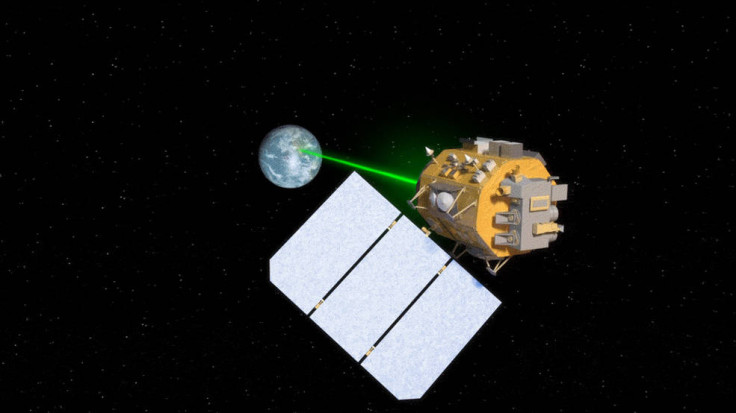Beam me up: Nasa to use lasers for next-generation 'broadband internet' speeds in space
Faster interplanetary data transmission 'on the cusp' says space agency.

In space, no one can hear you listening to Spotify. That is because data speeds being beamed across that final frontier are so slow that astronauts and space scientists have a connection of just a few megabits per second to work with. Nasa has a plan to solve this and, naturally, it involves lasers.
Despite all the sophisticated tech it uses to explore the galaxy even Nasa describes vital data communication speeds at its disposal "a pittance even by dial-up standards". The problem is, unlike here on planet earth, there are vast distances involved with transmitting data through space. Also it still uses a 60-year-old technique of carrying its data over radio waves. However, Nasa believes it is "on the cusp of a change".
A 'broadband moment'
In a blog post it predicted: "Just as going from dial-up to broadband revolutionised the internet and made high-resolution photos and streaming video a given, Nasa may be ready to undergo a similar "broadband" moment in coming years."
This next-generation breakthrough is possible by using lasers where data is beamed over light, meaning it could make speeds up to 100 times faster. The idea to use lasers for data transmission has been in development for some time but Nasa is getting excited about the technology and describes the impact it would be similar to that of when dial-up went to broadband.
This ramp in speed is a quantum leap for scientists who would be looking at the potential to send high quality live video from the surface of other planets, send much larger images back to earth, and also be able to study sudden events such as dust storms or erupting volcanoes much faster.
"Laser technology is ideal for boosting downlink communications from deep space," said Abi Biswas, the supervisor of the Optical Communications Systems group at Nasa's Jet Propulsion Laboratory. "It will eventually allow for applications like giving each astronaut his or her own video feed, or sending back higher resolution, data-rich images faster."
As an example, Nasa details how its Mars Reconnaissance Orbiter sends data at just 6Mbps, however if it adopted laser technology it could increase maximum data rate to 250Mbps. Nasa's work with photonics is explained in this video.
Nasa's laser quest
While laser might sound like a light at the end of the tunnel, it is by no means a flawless technology. Lasers are more susceptible to external interference such as adverse atmospheric conditions, whereas radio waves, while slow, are steady.
"Radio technology won't be going away. It works in rain or shine, and will continue to be effective for low data uses like providing commands to spacecraft," the post said.
There is also the problem that, at the moment there is no infrastructure in place to support laser-driven data. Nasa's vast Deep Space Network of antennas to communicate to satellites and spacecraft all use radio waves and would have to be upgraded.
Nasa is undeterred though and is making strides to take its communications to warp speed using lasers. There are two missions scheduled that will launch the technology into space: the first, Laser Communications Relay Demonstration (LCRD) in 2019 will beam signals 25,000 miles from earth to a satellite and following that, a Deep Space Optical Communications mission will test laser tech for light speed interplanetary "internet".
© Copyright IBTimes 2025. All rights reserved.






















